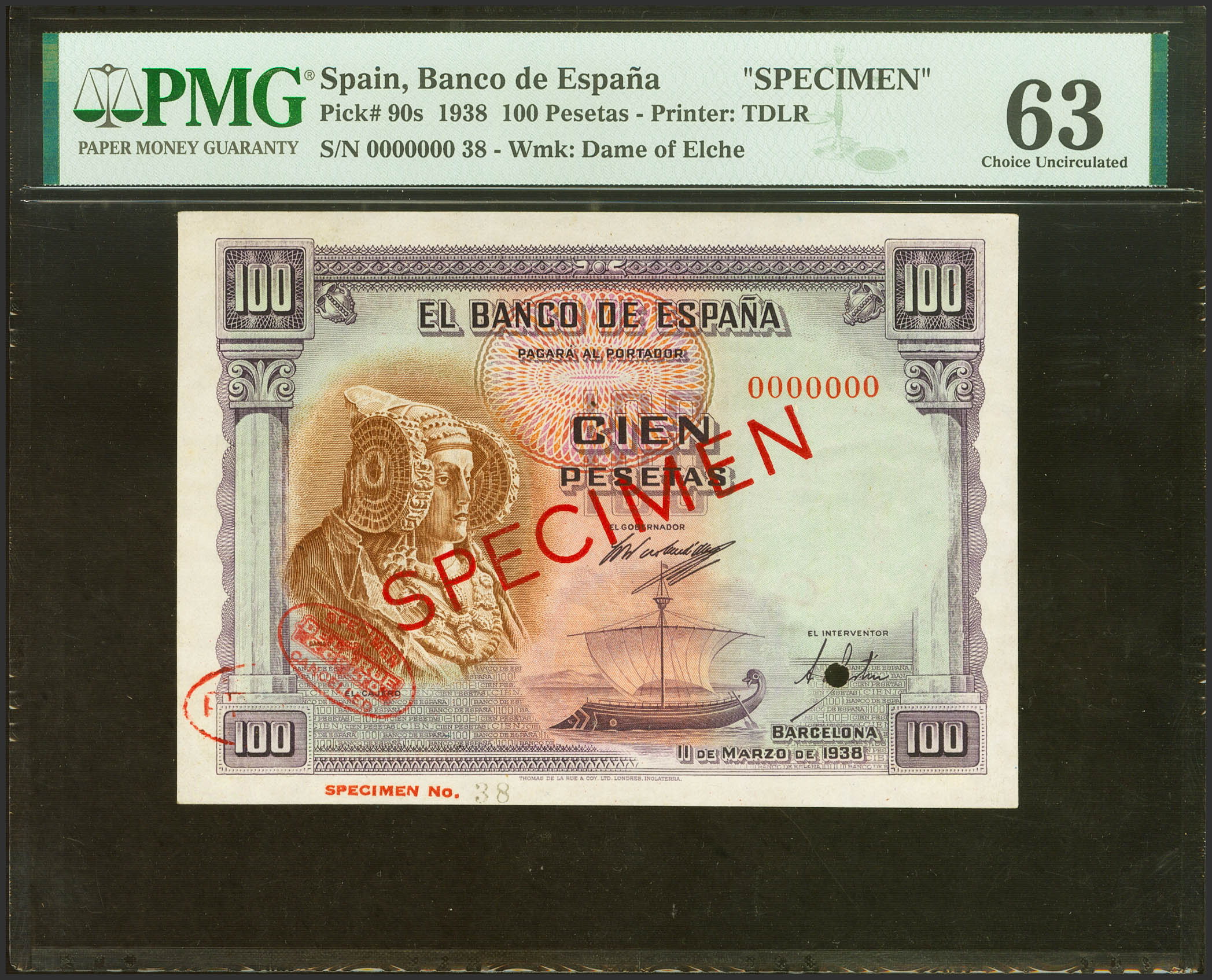58 | Spanish Banknotes












Automatically generated translation
 100 Pesetas. March 11, 1938. Not Issued, Numbering 0,000,000, SPECIMEN, diagonally, with the La Rue seal and numbered Nº38, numbered specimens are very rare, normally for high-ranking authorities. (Edifil 2021: NE32M, Pick: 90s). Extremely rare, very few known copies, without a doubt one of the rarest banknotes in the Spanish billet and without a doubt one of the most iconic banknotes. Uncirculated. PMG63 encapsulation ("previously mounted", like most of those known).
100 Pesetas. March 11, 1938. Not Issued, Numbering 0,000,000, SPECIMEN, diagonally, with the La Rue seal and numbered Nº38, numbered specimens are very rare, normally for high-ranking authorities. (Edifil 2021: NE32M, Pick: 90s). Extremely rare, very few known copies, without a doubt one of the rarest banknotes in the Spanish billet and without a doubt one of the most iconic banknotes. Uncirculated. PMG63 encapsulation ("previously mounted", like most of those known).
The development of the Spanish Civil War produced a totally different economic development on both sides in the conflict. While in the territory dominated by the rebel troops inflation was more or less contained (within what a war context allows), in the republican zone it ran amok. This increase in prices led to the need to produce and issue more and more banknotes in Republican territory, which in turn translated into new orders and extensions from others to Bradbury, despite the large quantities of banknotes that had already been ordered. before the outbreak of war. And how they had already involved Thomas de la Rue in the game months before the war, since they also continued working with said English printing company. The orders followed one another and the action intensified from the second half of 1937 and 1938.
For reasons unknown to us, the order dates and order entries with Thomas de la Rue suggest a design and manufacturing process noticeably slower than those of Bradbury, which generally committed to producing banknotes in terms of about six to eight months, sometimes even less. Thomas de la Rue designed one of the iconic banknotes of Spanish Notafilia of the 20th century, dedicated to the Lady of Elche. The printer produced numerous proofs with various color combinations. The ones we know are always in orange or reddish tones and have handwritten numbering in the lower right, from D701 to D713. Some copies are also known in final colors cut without numbering, others with annotations and very few with numbering.
As for the specimen with the TDLR stamp, it is extraordinarily rare. It is the third copy that we know of this way and it has the particularity of the partial impression of the printing company's archival stamp, which by the way looks like an ink pad compared to the usual intaglio stamp of other copies in later years. A specimen like this has not been seen at auction for more than a decade.
Online Banknotes Auction Via Stellae #89
Wednesday, 20 December 2023 | 16:00
Lot 58














